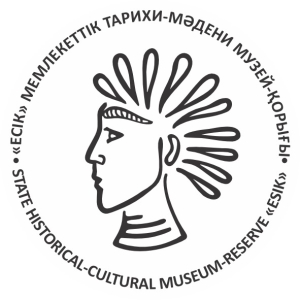Dated 5th-4th centuries BC, located at 50-55 km east of Almaty City on both sides of the Esik River in close proximity to the Esik Town, the center of the Enbekshikazakh District of the Almaty Region. The archaeological landscape of the necropolis covers the territory from the Kulja Tract (northwest) and enters the territory of the Esik Town itself (southeast).
There are more than 80 kurgan mounds on the territory of this large burial ground; they form a unique landscape which was the resting place of the diseased Saka nobility. In the past the area of the necropolis was 1.5 thousand hectares and included more than 600 kurgans of various sizes (today about 300 still exist)
The Esik Necropolis was discovered for the first time by the Hungarian scientist György Almasy in 1900, and designated as an archaeological monument by the Russian scientist A.N. Bernshtam in 1936. The expedition continued in 1939 when the plan was drawn, and the most “typical” kurgans were level-surveyed. Bernshtam noted the high density of Esik kurgan groups within the burial ground, and was amazed by the size of some of the kurgans. However, he did not expect to get any significant results here, because almost all of them were robbed. The research results were published only post-war in 1948.
Archaeological excavations at the site continued in 1968, but they were irregular. The burial ground gained fame in April 1970 due to the preservation excavations at the new automotive base site that was under construction, when the unplundered burial of the Saka king, the burial of the Golden Man, was discovered there. Three burial kurgans were explored In 1999 under the guidance of the archaeologist Beken Nurmukhanbetov; one of them is now museumificated and is a part of the exposition site of the reserve-museum. Visitors have a rare opportunity to see the “steppe pyramid” in section. The research continued again since 2011 by the archaeologists of the EsikMuseum Reserve in various parts of the necropolis, including those that are not located in the preservation zone of the Museum Reserve.
